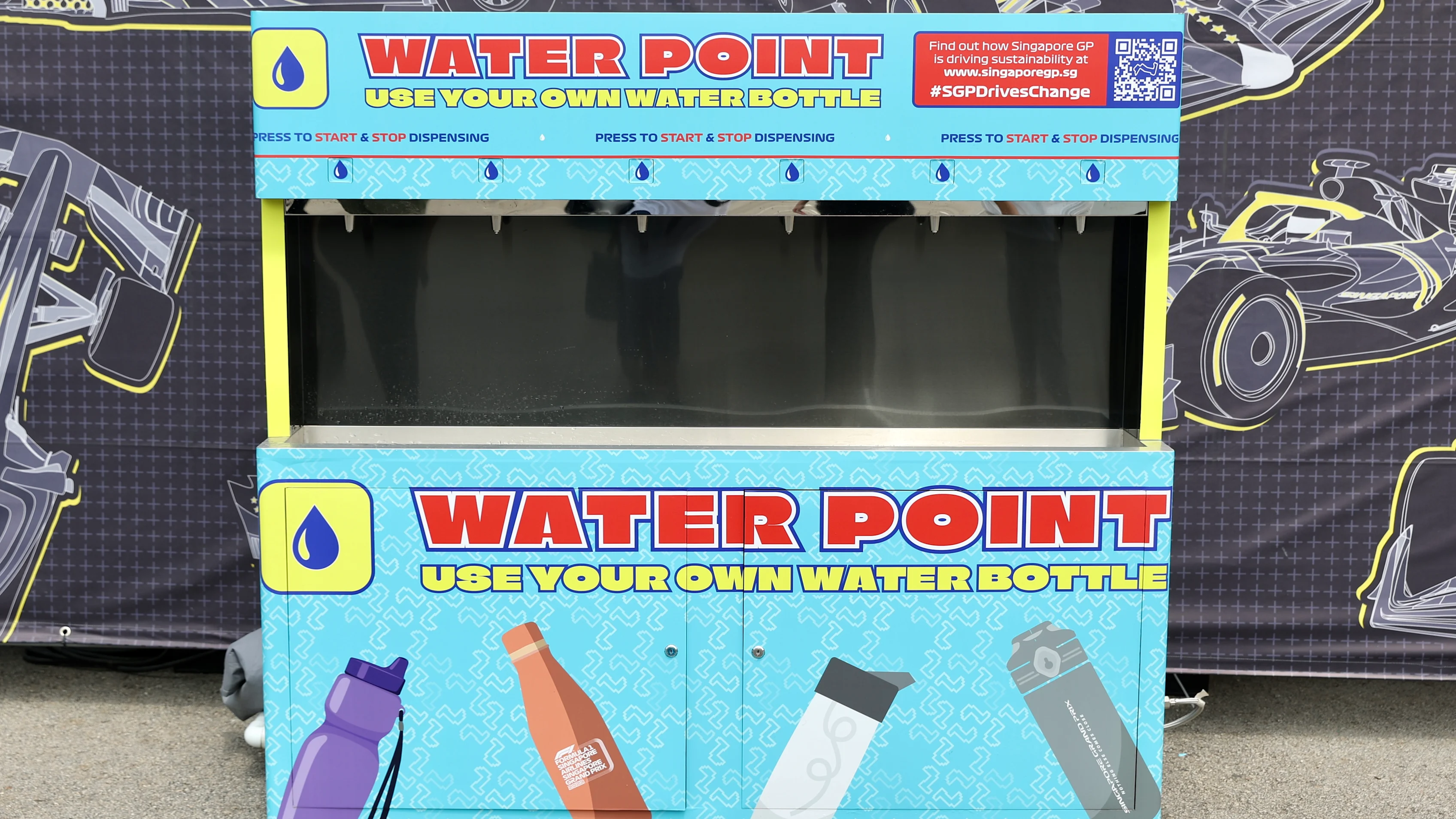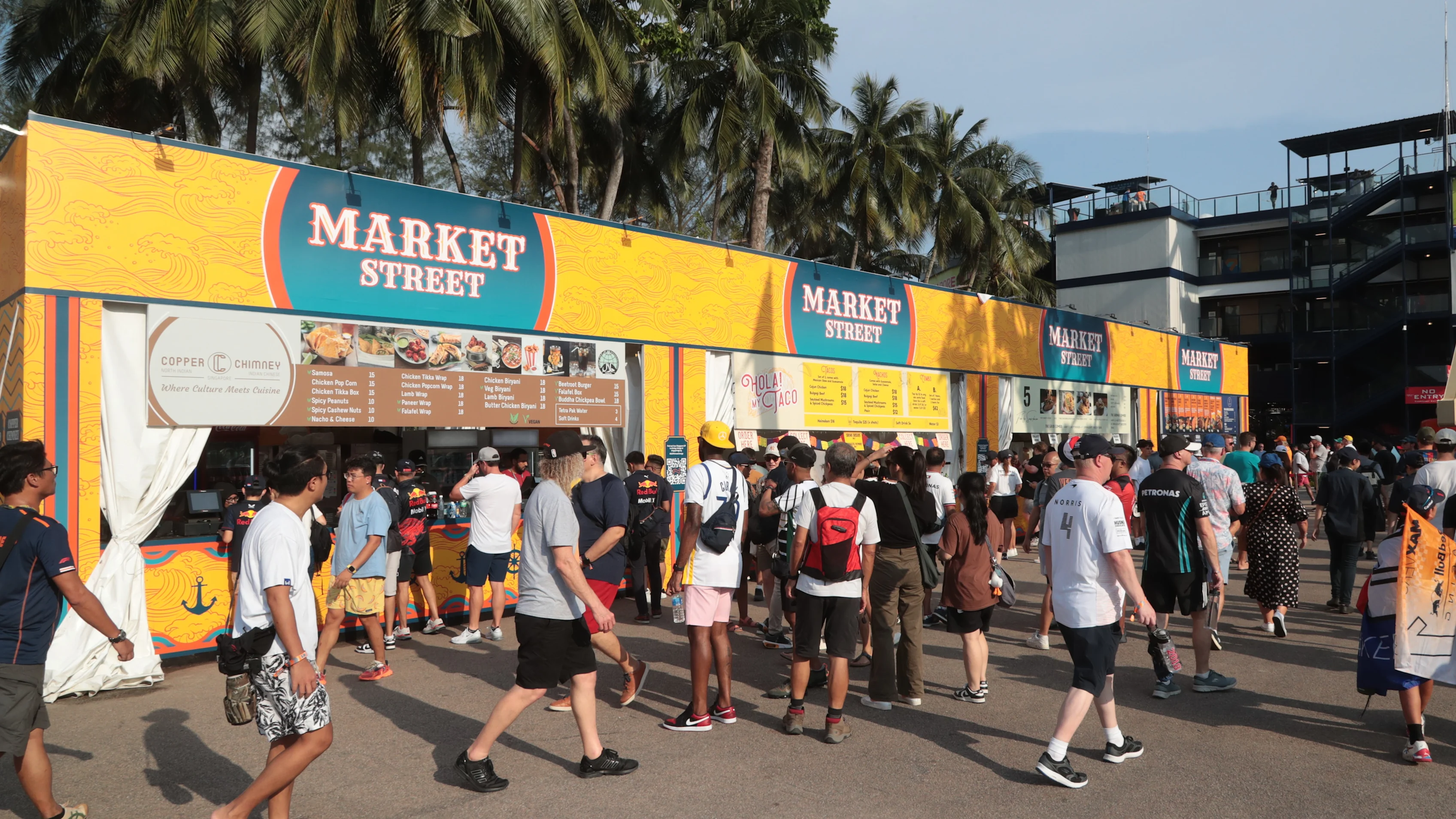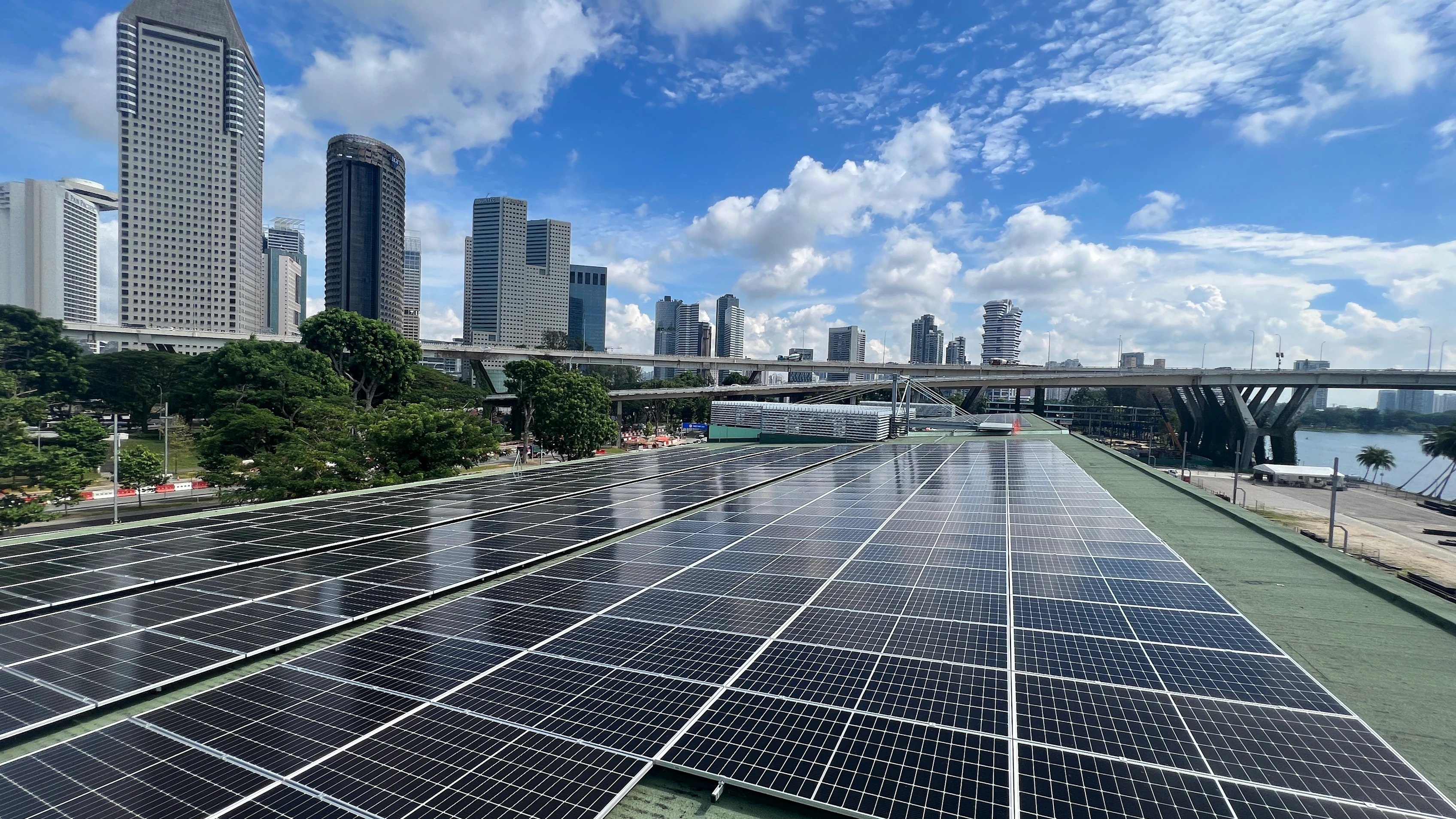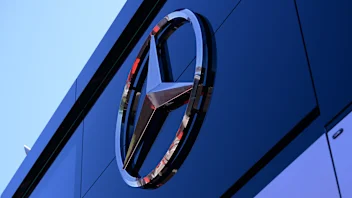After a summer travelling around Europe, the final flyaway sequence of the 2023 season recently got under way with a visit to Singapore. As F1’s original night race, debuting on the calendar some 15 years ago, the Marina Bay venue has consistently blazed a trail over the years and is now making its mark on the sustainability front.
Indeed, organisers of the event – who have been working closely with the Singapore Tourism Board to lay the foundation for a more sustainable Grand Prix, and build lasting positive change in line with F1’s overarching Net Zero 2030 goals – recently published a detailed Environmental, Social and Governance report to serve as a roadmap for the years ahead.
READ MORE: F1’s use of DHL biofuel-powered trucks reduces carbon emissions by an average of 83%
This has been structured around three key sustainability pillars:
- Reducing the event’s carbon footprint with energy at the forefront (which includes halving energy emissions and increasing the use of renewable energy sources)
- A holistic approach to sustainability (adopting a circular economy, and sourcing and utilising resources that are sustainable and minimise waste)
- Creating a positive impact in the community (with a focus on growing education, employment and volunteering opportunities and maintaining an equal, diverse and inclusive talent pool).
You can find the report and more information about the event’s sustainability actions at the official Singapore Grand Prix website.
The organiser’s continuing efforts to make the event as sustainable and beneficial to the local community as possible are clearly positive for the future. As one of six night races on the F1 calendar – along with Bahrain, Saudi Arabia, Qatar, Las Vegas and Abu Dhabi – the work happening in Singapore could also have an even wider impact on the sport.
How the Singapore Grand Prix is already making a difference
Plenty of positives can be highlighted when looking back on the 2022 event.
When it came to reducing carbon footprint, a whopping 85% of grid electricity consumption was carbon neutral; B7 biodiesel was used to power 48% of the Circuit Park; and a successful trial with energy-efficient LED lights meant all existing track lights were replaced with LED bulbs for 2023 – reducing energy usage from track lighting by around a third.
There were also continued communications via multiple touchpoints encouraging fans to take public transport, while a transition from printed tickets to digital e-tickets, as well as continued implementation of digital project management and reporting systems, significantly reduced the amount of paper and plastic waste.
The move towards a circular economy saw a ban on the sale of single-use plastic bottled still water, eliminating 160,000 used plastic bottles compared to 2019, with an increased number of water refill stations inside the Circuit Park encouraging fans to use their own water bottles.
Having collected used cooking oil from food and beverage operators to be converted to biodiesel since the 2011 running of the event, the 2022 weekend saw 2,100kg collected, equating to the reduction of more than 4,000kg of CO2 in emissions.
Elsewhere, sustainably sourced tableware was used in the Paddock Club, Hospitality Suites, select staff canteens and Singapore GP Grid Bars, and the bio-digestion of food waste for conversion into farm-ready fertilisers from select hospitality areas was trialled.

In terms of creating a positive impact on the community, organisers supported the local economy and employment creation by sub-contracting to more than 800 Singapore-based companies, with some 30,000 staff, contractors and stakeholders accredited to work for the event. More than 900 students from the Institute of Technical Education were also provided with work experience opportunities.
A free pit lane experience for 4,000 members of the public to view the F1 cars and team garages up close was held once more, and there was continued provision of wheelchair seating for fans with limited mobility and their companions.
All of these initiatives are highlighted by the event’s attainment of a one-star rating in the FIA’s Environmental Accreditation Programme and a certification from the Singapore Environment Council Eco-Events certification, with the pit building also obtaining a Green Mark Gold Plus from Singapore’s Building and Construction Authority.

Maximising social and community impact
From the health and well-being of fans, staff and vendors to championing diversity and inclusion, to engaging the community and making the race more accessible for fans with limited mobility, Singapore’s organisers have made a wide-ranging contribution to the community over the years.
Since the first race in 2008, some $3.86 million has been raised for charity organisations; since 2016, 384,000 have visited the Singapore GP roving truck; almost 100,000 students have participated in school talks on F1 over the years; and 26,000 people have walked the pit lane experience.
Net Zero Carbon: How Formula 1 is going to meet this ambitious target by 2030

What sustainability plans are in place for the future?
Minimising environmental impact
With energy accounting for 96.1% of Singapore’s 2022 greenhouse gas emissions, organisers are committed to halving energy emissions from the event by 2028, focusing on energy reduction, increasing renewable energy capacity and utilising Renewable Energy Certificates for unavoidable emissions.
Alongside this, the ‘Reduce, Reuse and Recycle’ approach means procurement will be reduced where possible, sustainably sourced materials will be used and a significant contribution towards a circular economy will be made by turning select waste into reusable materials.
Having reused construction materials since the event’s debut in 2008, Singapore will also work with partners to implement practices that ensure the proper and sustainable procurement and utilisation of infrastructure at the circuit.

Ensuring governance and transparency
Singapore will report progress annually as they work towards their sustainability goals, while inviting like-minded organisations to collaborate and share best practices, including piloting initiatives together and fostering a collective approach that extends beyond the event.
Work will continue with partners and stakeholders on the event’s Environmental, Social and Governance journey through the application of internationally recognised practices and approaches that are in compliance with local regulations and guidelines.
READ MORE: How logistics experts DHL are helping Formula 1 hit their Net Zero by 2030 target
These actions are aligned with international benchmarks in the sustainability space and contribute towards F1’s aforementioned goal of reaching Net Zero by 2030, along with the United Nations’ Sustainable Development Goals.
Finally, Singapore organisers are committed to ensuring that their Environmental, Social and Governance efforts remain aligned with industry benchmarks while holding themselves accountable on their journey towards reducing carbon emissions – underpinned by continuous efforts to adopt best practices and assess technological and innovative advancements.
“We have adopted incremental sustainability measures since our debut in 2008, but with advancements in technology and the evolution of best practices, we now have an opportunity to do more,” says Sasha Rafi, Director of Sustainability, SGP.
“Equipped with data from our 2022 carbon footprint report, we have developed a roadmap that will allow us to meaningfully reduce emissions, with a distinct focus on energy use. These measures will be taken in tandem with Formula 1’s global efforts to reach net zero by 2030.”
Next Up


.webp)

.webp)

.webp)